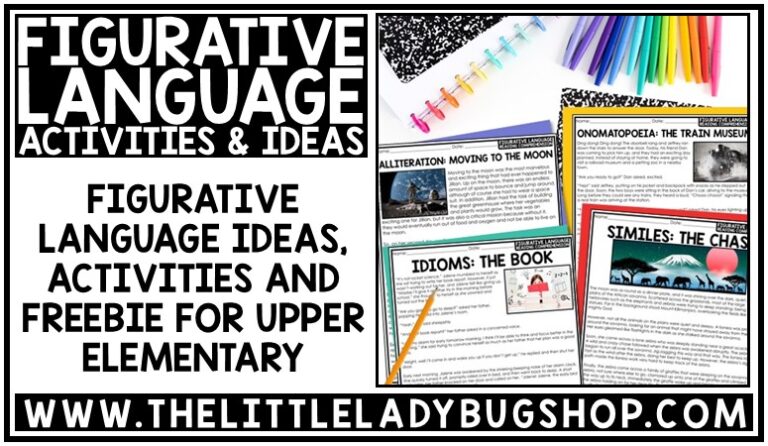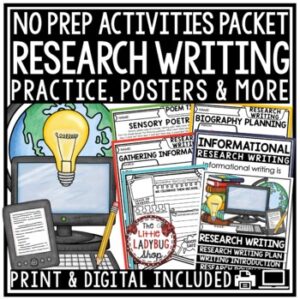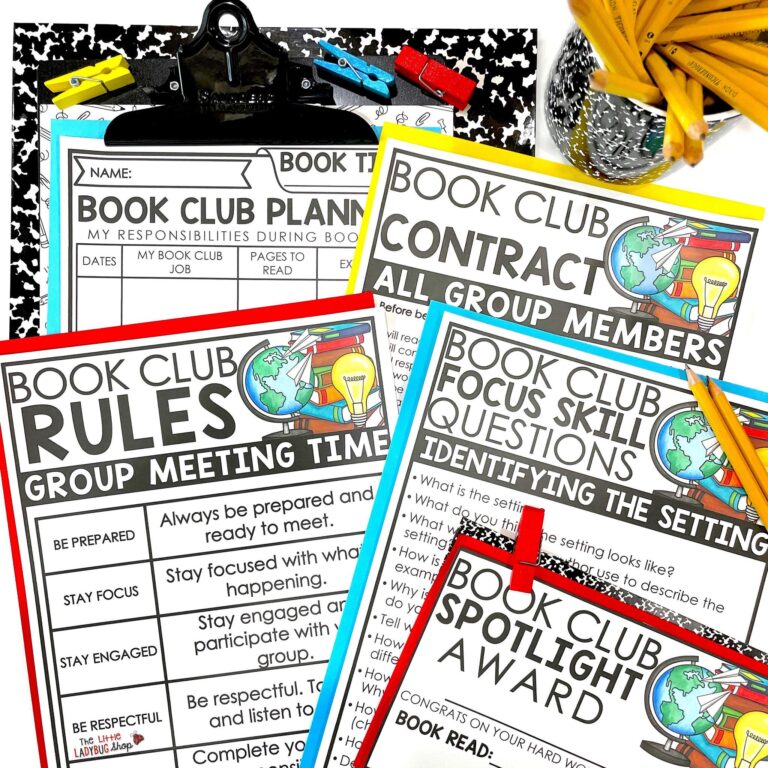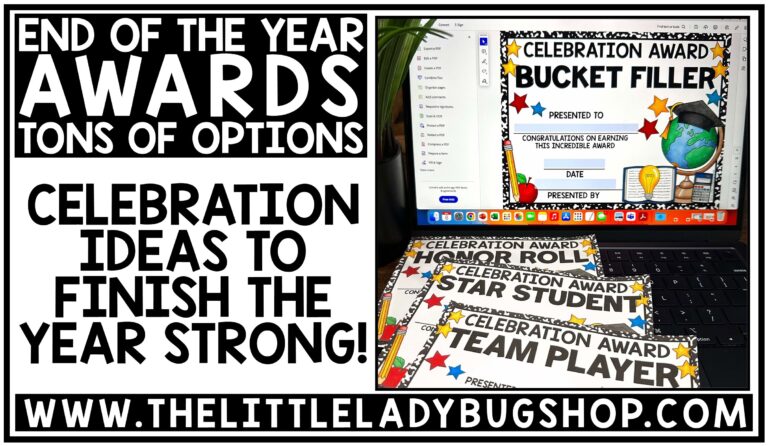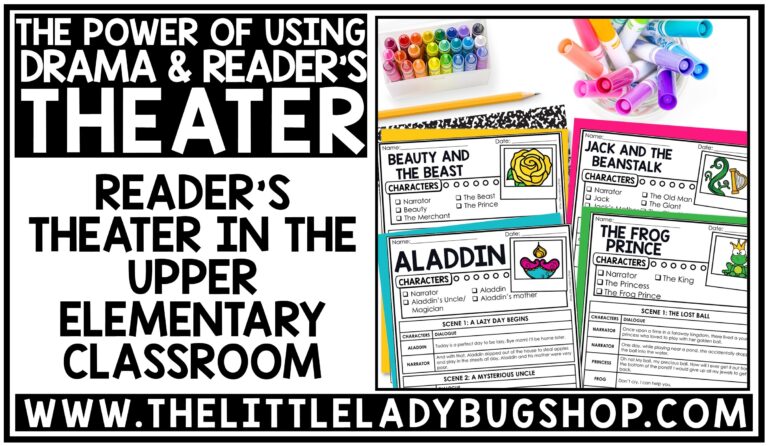
Teaching Fables in Upper Elementary
Share it:
Do you know what a fable is? These popular stories feature animals and also include a moral. If you’re a teacher, then you’ve definitely heard of them when you were reading through the Common Core Standards! In the third through fifth grades, they are part of the literature requirements.
But, how do you make these stories come alive and engage your students?
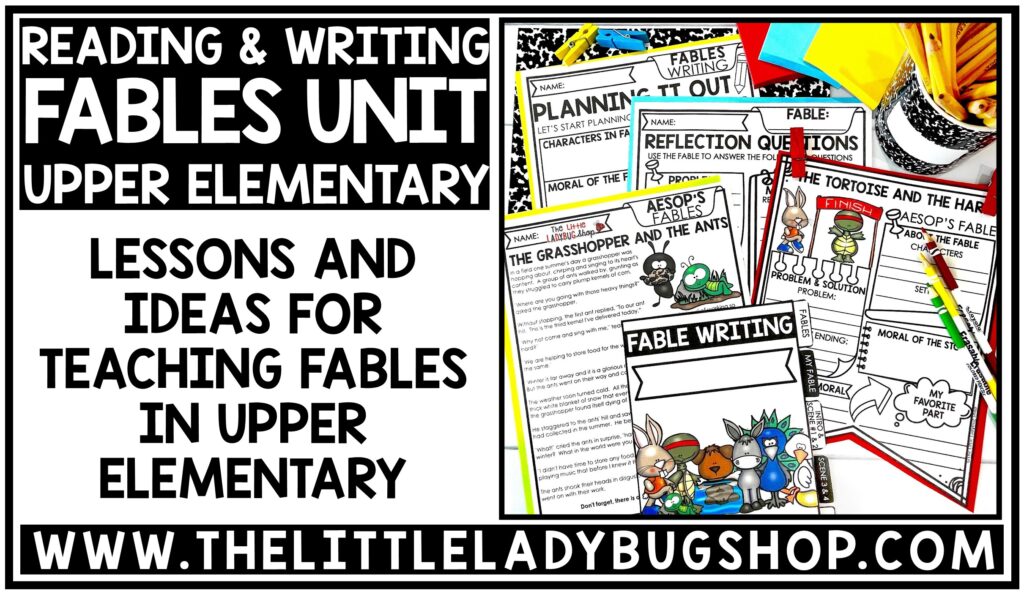
Here are a few great books for Teaching Fables
The most important thing when teaching a new genre or skill is to expose students to new books, new texts that helps them understand the way the text is written. I have purchased many books to add to my library to expose my students to the text, and I have shared my teaching schedule below, for you to understand how I incorporate it all into my lessons.
Here are a few of the fables I share…
- Aesop’s Fables Hardcover: The Classic Edition
- Chinese Fables: The Dragon Slayer and Other Timeless Tales of Wisdom
- Mabel: A Mermaid Fable
- Grandpa’s Fortune’s Fables
- Fables Readers Theater
My Favorite Way to Teach Fables
I love teaching fables in the classroom and I created this huge packet to meet the needs of your students. Not only can you use this packet with any fable, you can read 20 fables and have students write their very own fable!
Check out my FABLES BUNDLE, this pack features the following:
- Teacher tips and notes
- All pages in color and black/ white option
- Clickable table of contents for easy navigating
- 20 Aesop’s fable stories
- 20 Teach-Go Pennants® for display with answer keys
- Fables Genre definition poster
- Cover pages to create fable notebook
- Aesop mini information sheet for students notebook
- Fables reading graphic organizers for comprehension
- Student fables writing pages
- Student fable publishing flip book with several cover options
- DIGITAL FORMATS NOW AVAILABLE!
In addition, there are plenty of activities for you to use with your students. For example, try using one of my graphic organizers! The organizers focus on story elements, main ideas, sequence, problem and solution, character comparisons, and more! Pick and choose the areas you want to target and print the relevant sheets out for an easy lesson. In addition, this packet includes writing activities. Students can practice everything from writing their own fable to writing their own author bio.
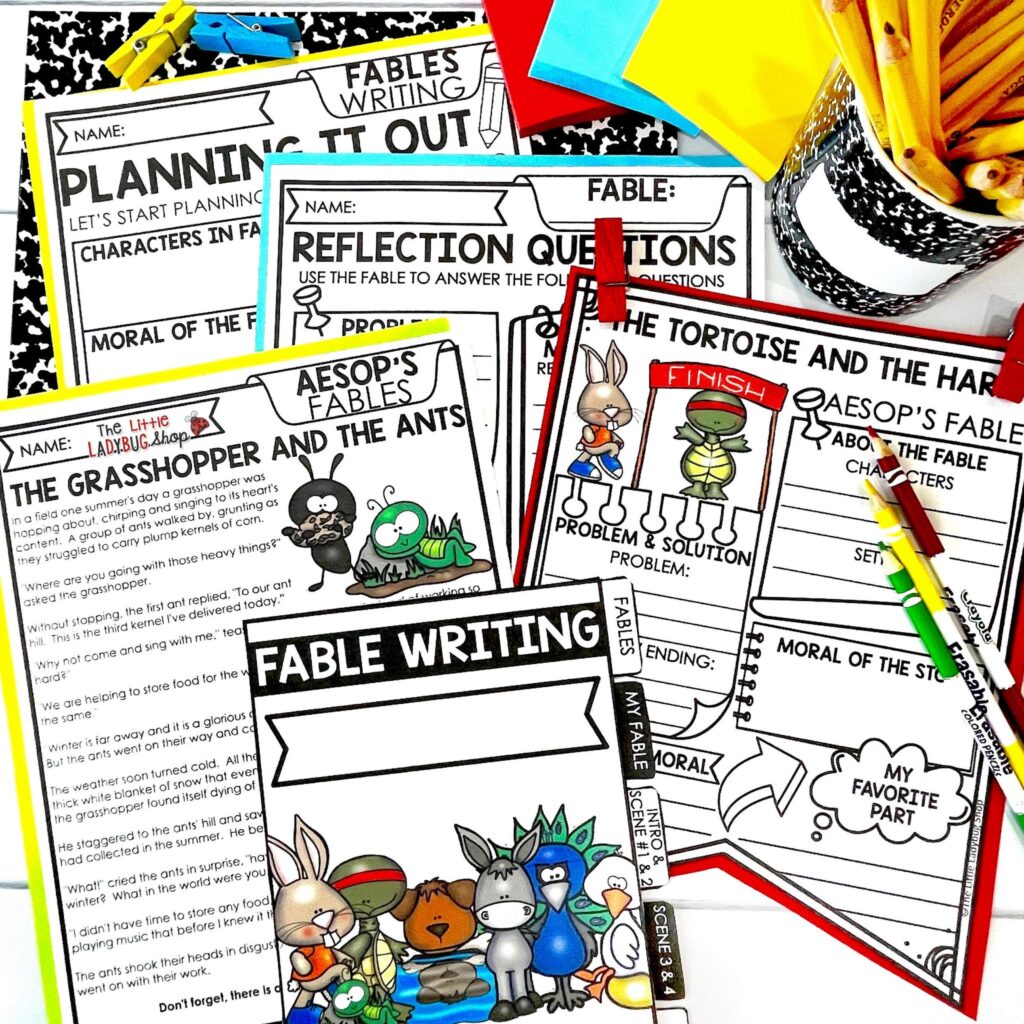
FABLES BUNDLE
HERE IS A SAMPLE OF MY SCHEDULE FOR TEACHING FABLES
When teaching fables I dedicated a few weeks to read the stories with my students, I would read several fables, and have my students complete graphic organizers on what we read to show comprehension.
Week #1: Read and explore several fables (I provide several options in here for you). Students complete graphic organizers (options provided). We discuss and review how fables are written.
Week #2: Read and explore more fables. Allow students to start thinking of a fables they would want to write. We use the writing graphic organizer templates. **I always modeled a sample fable writing lesson on an anchor chart and students help me create a class fable. We do tiny steps daily and students help every part of the way!
Week #3: Student begin writing their fables, using the charts I provide. I also make table copies of the fables they have read so they have guidance on how to create. We do step by step… Scene #1, and #2 and continue the writing process.
Week #4: We edit, and revise student fables. Then, students begin illustrating and creating final version of their fables. At the end of the week if time allows we would present their fables and definitely display their fables for all to read (fable flip book).
Remember there is no right or wrong way to teach fables. I know you will have so much fun and your students will love reading all these wonderful stories!
HERE ARE A FEW OTHER IDEAS FOR TEACHING FABLES IN THE CLASSROOM
Act Them Out
Nothing is quite as fun as playing pretend! Invite children to create costumes, use face paint, and become the fable. This works well for most fables, but use your best judgement when choosing a fable to turn into a play.
Write Your Own Fable
Writing their fable helps children develop a deep understanding of fables. Children must think of their own characters, a moral for the story, and a plot. In this way, students explore all of the important elements of fables. To switch things up, why not have kids write in a small group?
Plan and Hold and Character Party
Have students pick a favorite character from a fable, and ask them to plan and hold a party for them! For example, how would a party for the town mouse be different than a party for the country house?
Write a Letter
Invite children to pretend that they are the character who learned a lesson in the fable. Then, ask them to write a letter telling a friend or family member about what they learned. For example, children could pretend to be the hare from the fable “The Tortoise and the Hare”. They might right to their brother and explain how they lost the race for falling asleep and being too confident. The hare might even explain what he might do differently the next time he races.
Do you have a fun way to teach fables? Tell me about your ideas! Get in touch with me on Instagram or send me an email at thelittleladybugshop, I would love to hear from you!
DON’T FORGET TO SAVE THIS POST FOR FUTURE REFERENCE
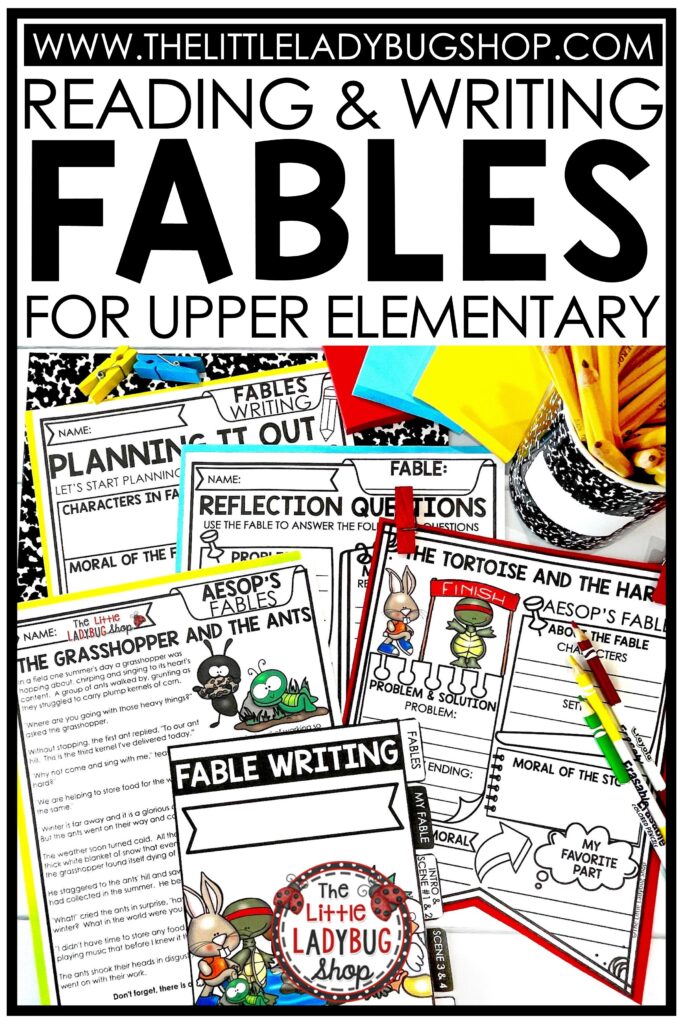
This post may contain affiliate links for your convenience. View our full disclosure policy here.







